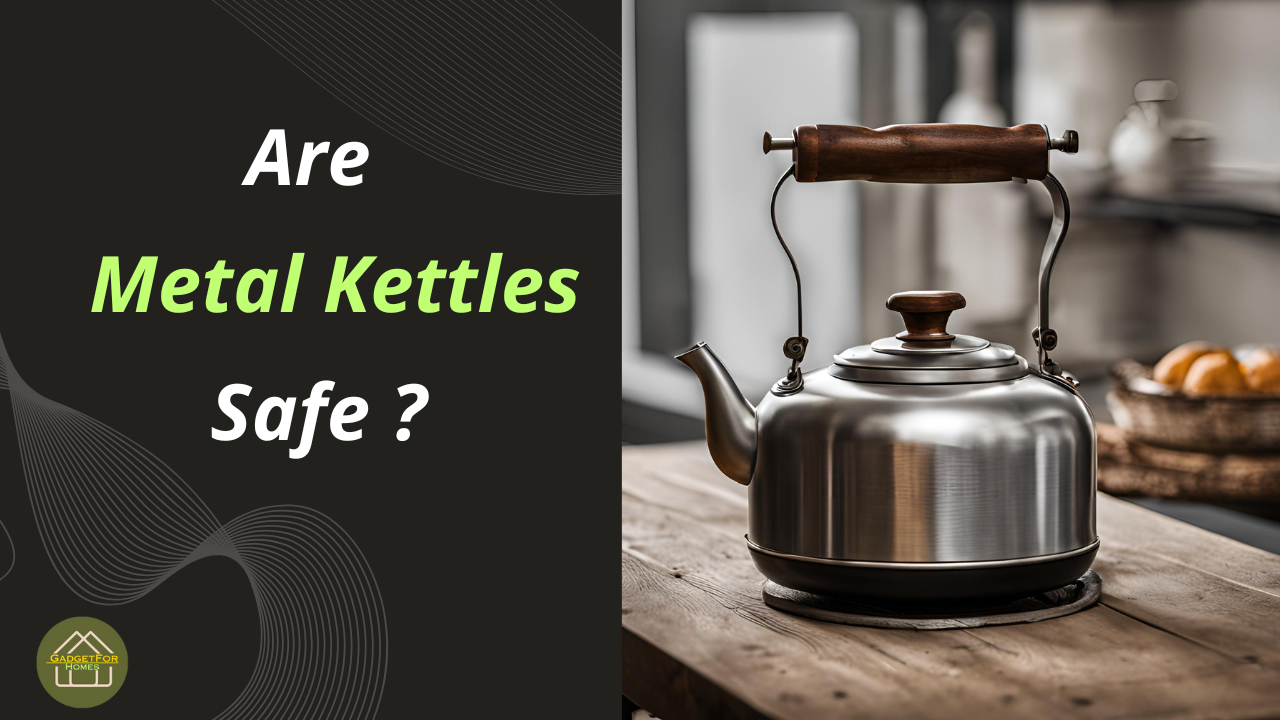Ever wondered if your trusty metal kettle is secretly harming you? With so many materials on the market—glass, plastic, ceramic—it’s easy to question if metal kettles are the safest choice for your daily brew.
In this blog, we’ll break down the facts, bust some myths, and help you sip your tea with confidence. So, grab your favorite cup, settle in, and let’s uncover whether metal kettles are really friend or foe. Keep reading!
Table of Contents
Are Metal Kettles Safe?
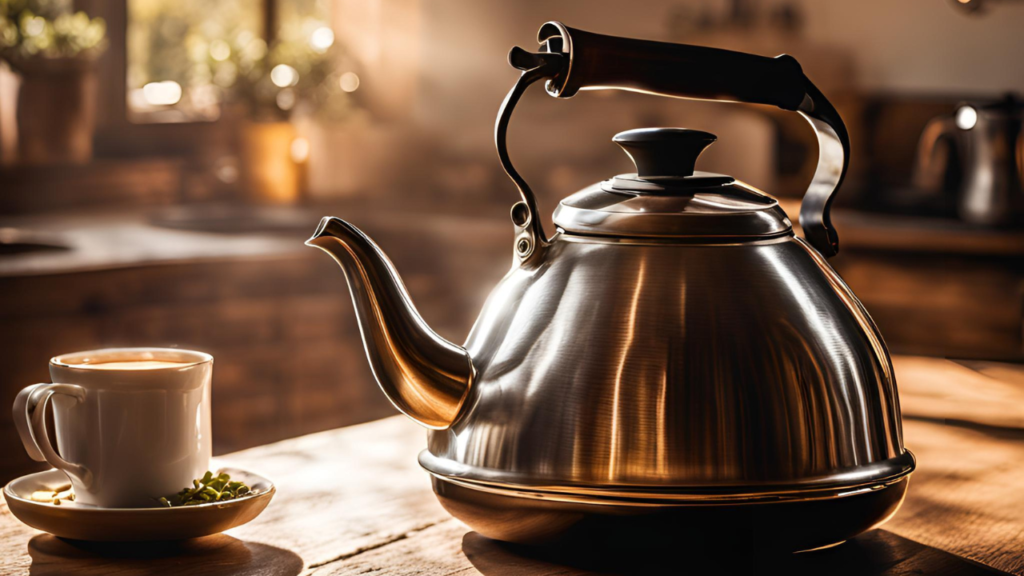
When it comes to boiling water, metal kettles are a popular choice in many homes. But a common question pops up—Are metal kettles safe? The short answer is yes! But, like anything else, it depends on the type of metal and how you use it. Let’s break it down.
Summary of Key Insights
Not all metal kettles are created equal. The safest metal types include:
- Stainless Steel: Durable, rust-resistant, and non-reactive. Look for food-grade types like 304 or 18/8 stainless steel.
- Anodized Aluminum: Prevents leaching and is safe for boiling water.
- Copper (Lined): Always make sure it’s lined with tin or stainless steel to prevent harmful copper leaching.
- Cast Iron: Great for heat retention but needs regular maintenance to avoid rust.
Recommendations
- For Daily Users: Go for a stainless steel or anodized aluminum kettle. They’re reliable, long-lasting, and safe for frequent use.
- For Occasional Tea Drinkers: A lined copper kettle or cast iron kettle works fine, as long as it’s well-maintained and cleaned regularly.
Actionable Tips: Safety Checklist Before Buying a Kettle
- ✅ Check the Material: Look for food-grade stainless steel (304/18/8) or anodized aluminum.
- ✅ Look for Certifications: Ensure it meets food safety standards.
- ✅ Avoid Cheap Knockoffs: Poor-quality metals can leach harmful substances.
- ✅ Test Before Use: Boil and discard water a few times before regular use.
- ✅ Maintenance is Key: Clean and descale your kettle regularly.
In short, metal kettles are safe when you choose the right type and take good care of them. So go ahead, boil your water, make your tea, and enjoy it worry-free!
↘️↘️↘️
Did You know plastic kettles are safe or not ? then check this blog 👉👉👉Is a plastic kettle safe ?Different Types of Metal Kettles
When it comes to choosing a kettle, metal ones are often a popular pick. But are metal kettles safe? Let’s break it down into four common types and see what makes them tick.
Stainless Steel Kettles

Stainless steel kettles are made from a mix of iron, chromium, and nickel. They are rust-resistant, durable, and non-reactive, making them a favorite in many homes.
However, if you have a nickel allergy, you might need to be cautious. Poor-quality stainless steel can also pose health risks, so always look for certifications like food-grade stainless steel (e.g., 304 or 18/8) to ensure safety.
Aluminum Kettles

Aluminum kettles are known for being lightweight and great heat conductors, which means they boil water quickly. But here’s the catch—if you use acidic or alkaline water, it can cause aluminum to leach into your drink.
The safer option? Anodized aluminum kettles. They have a protective layer that prevents leaching. Some studies suggest excessive aluminum exposure might be linked to neurological issues, so choose wisely.
Copper Kettles
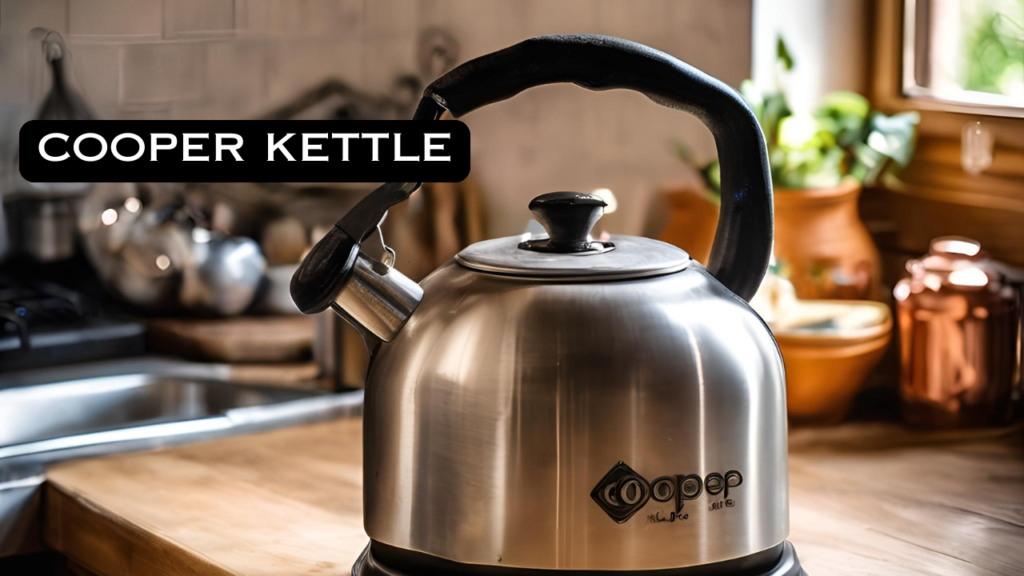
Copper kettles are loved for their traditional charm and excellent heat conductivity. However, they come with a warning: unlined copper kettles can leach copper into water, which can be harmful. The solution? Make sure your copper kettle is lined with tin or stainless steel. This simple step keeps your drink safe and your kettle beautiful.
Cast Iron Kettles
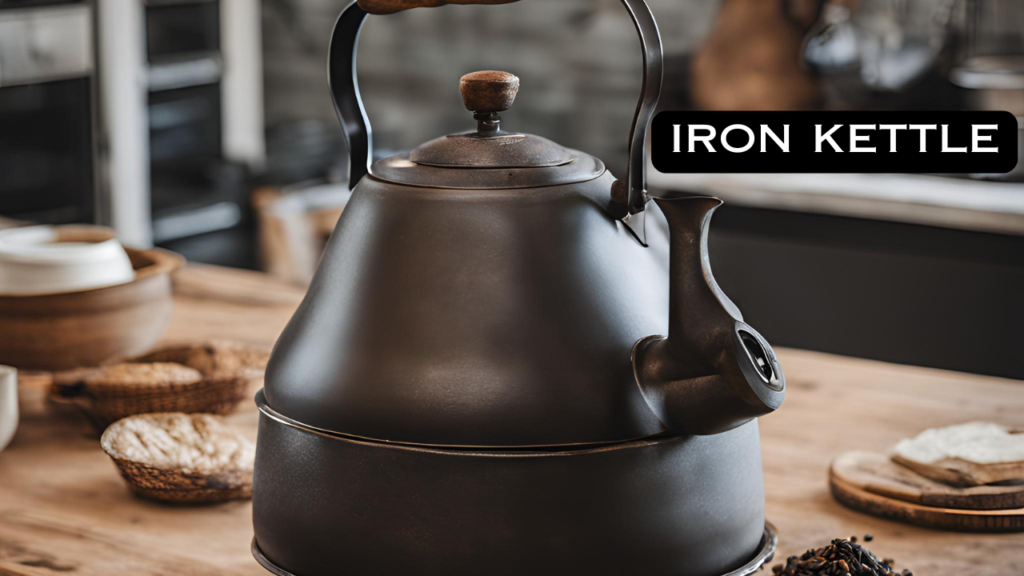
If you love slow brewing and long-lasting heat, cast iron kettles are your go-to. They’re incredibly durable and keep water hot for hours. Plus, they can provide a small iron boost to your diet as water absorbs tiny amounts of iron. But beware—rust formation can be a problem if not maintained properly.
In short, metal kettles are safe as long as you choose the right type and care for them well.
The Metallic Taste in Water from Metal Kettles
Ever poured water from your kettle and noticed a weird metallic taste? Don’t worry—you’re not alone. While metal kettles are safe, that odd flavor can sometimes sneak into your drink. Let’s find out why this happens and how you can fix it.
Why Does Water Taste Metallic?
- Poor-Quality Stainless Steel: Low-grade stainless steel can sometimes react with water, leaving a metallic taste behind. Always choose food-grade stainless steel (like 304 or 18/8).
- Residue from Manufacturing: New kettles might still have leftover chemicals or oils from the factory. This can mix with your water during the first few boils.
- Mineral Buildup: Hard water leaves behind minerals like calcium and magnesium in your kettle, and over time, they can affect the taste of your water.
How to Get the Metallic Taste Out of a Kettle?
- Method 1: Boil a mixture of water and vinegar (1:1 ratio) in your kettle. Let it sit for about an hour, then rinse thoroughly.
- Method 2: Mix baking soda with water, boil it in your kettle, and give it a good rinse. Baking soda helps neutralize metallic residue.
- Method 3: When using your kettle for the first time, boil water multiple times and throw it out. This helps clear out any manufacturing residue.
- Method 4: Never leave water sitting in your kettle overnight. Stagnant water can react with the metal and cause that unwanted taste.
Preventive Measures
- Regular Descaling: Clean your kettle once a month to prevent mineral buildup.
- Use Filtered Water: Filtered water has fewer impurities, reducing the chances of a metallic taste.
By following these simple tips, your metal kettle can continue serving clean, fresh water. After all, metal kettles are safe—they just need a little care to keep them that way!
How to Remove Rust from a Metal Kettle?
Rust on a metal kettle can be annoying, but don’t worry—it’s fixable! Let’s break it down step by step, in simple terms.
Why Does Rust Form in a Metal Kettle?
- Exposure to Moisture and Air: When water and air mix on metal surfaces, rust can start to form.
- Poor-Quality Stainless Steel: Not all stainless steel is created equal; low-quality ones rust faster.
- Improper Cleaning and Drying: If you leave water sitting in your kettle or don’t dry it properly, rust finds a home.
Step-by-Step Rust Removal Process
- Mix Vinegar and Water (1:1 ratio): Fill your kettle with equal parts vinegar and water.
- Let It Sit: Leave it for a few hours or overnight to let the vinegar do its magic.
- Scrub Gently: Use a soft brush or cloth to scrub away the rust spots.
- Rinse Thoroughly: Wash the kettle with clean water.
- Boil Fresh Water: Boil a full kettle of clean water to remove any leftover vinegar smell or residue.
Alternative Methods
- Baking Soda Paste: Baking soda Paste: Combine baking soda and water to produce a paste. Apply it to stubborn rust spots and scrub gently.
- Lemon Juice and Salt: This natural mix works great on mild rust. Just apply, let it sit, and scrub away.
Preventing Rust Formation
- Always dry your kettle completely after every use.
- Store it in a dry place to avoid moisture buildup.
- Use stainless steel-specific cleaning products to keep your kettle in top shape.
With these simple steps, our metal kettles can stay rust-free and safe for everyday use!
How to Choose a Safe and Reliable Metal Kettle?
When buying a metal kettle, safety and durability should be your top priorities. Not all kettles are created equal, and picking the wrong one could affect your health or cost you more in the long run. Let’s break down the key features to look for, red flags to avoid, and some reliable kettle options.
Key Features to Look For:
- Food-Grade Stainless Steel Certification (e.g., 304, 316):
- Always check if the kettle is made of food-grade stainless steel like 304 or 316. These grades are rust-resistant, durable, and safe for boiling water.
- Anodized Aluminum Labels:
- Anodized aluminum is treated to prevent rusting and corrosion. It ensures your kettle stays in good condition even after frequent use.
- Proper Linings in Copper Kettles:
- If you’re going for a copper kettle, make sure it has a proper lining (like tin or stainless steel). Raw copper can react with water and become unsafe.
Red Flags in Unsafe Kettles:
- Unlabeled Materials:
- If the kettle doesn’t mention the material used, that’s a major red flag. It’s better to skip it.
- Poor Build Quality or Obvious Corrosion:
- Look for sturdy construction. Avoid kettles with visible rust, uneven surfaces, or wobbly handles.
↘️↘️↘️↘️
If you don't know stainless steel kettle safe or not then check this blog 👉👉👉 Is stainless steel kettle safe for daily use ?Best kettles to buy
Here are four reliable options with great reviews and features:
DIGISMART Mark-1 (2000 watts)
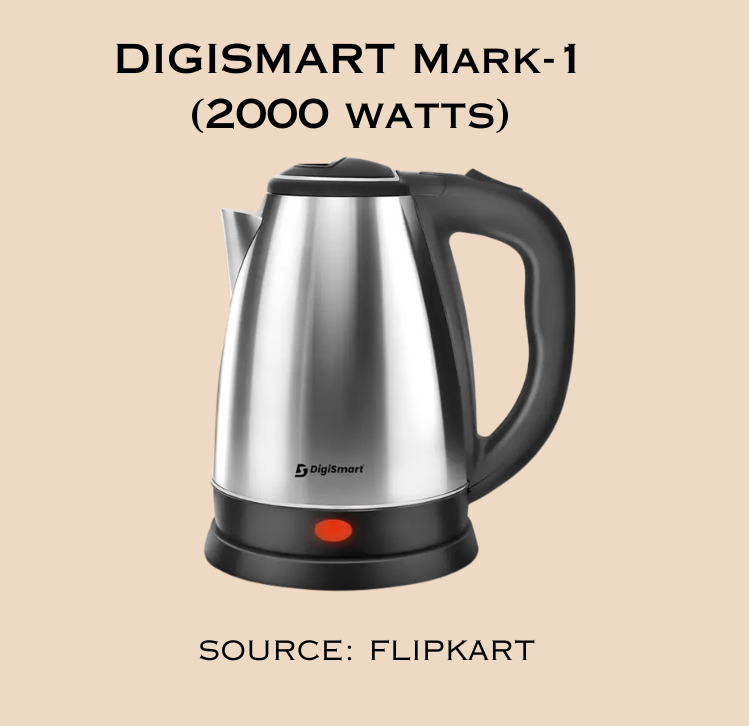
Powerful and fast boiling.
Made with food-grade stainless steel.
Durable build and easy to clean.
Users love its quick performance and sleek design.
WANT TO BUY AT LOW PRICE — CLICK HERE
PHILIPS HD-9303
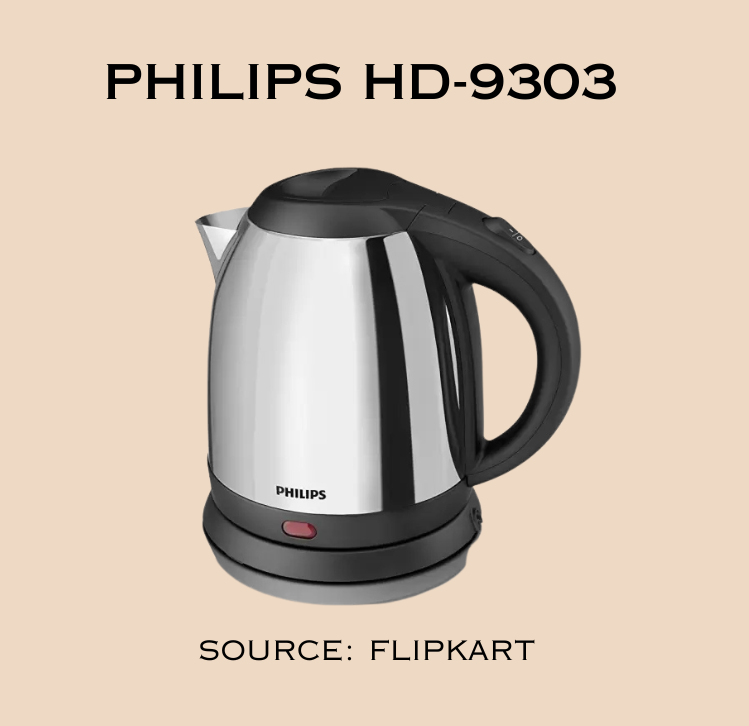
Trusted brand with safety certifications.
Automatic shut-off feature.
Energy-efficient and user-friendly.
Customers praise its durability and consistent performance.
WANT TO BUY AT LOW PRICE — CLICK HERE
Crompton ACGEK INSTANOURISH
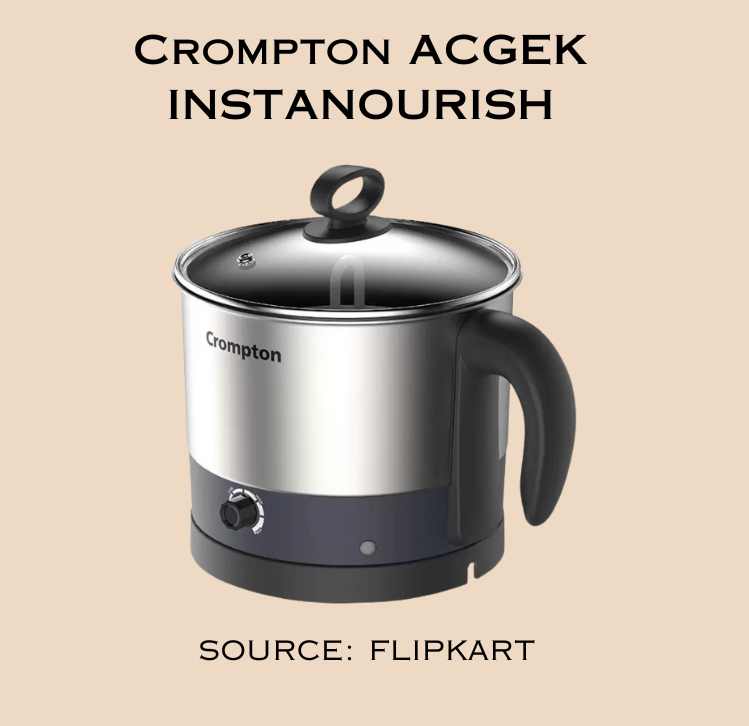
High-quality stainless steel body.
Ergonomic design for easy handling.
Comes with advanced safety features.
Highly rated for its value for money.
WANT TO BUY AT LOW PRICE — CLICK HERE
Crompton ACGEK-ACTIVHOT1.5
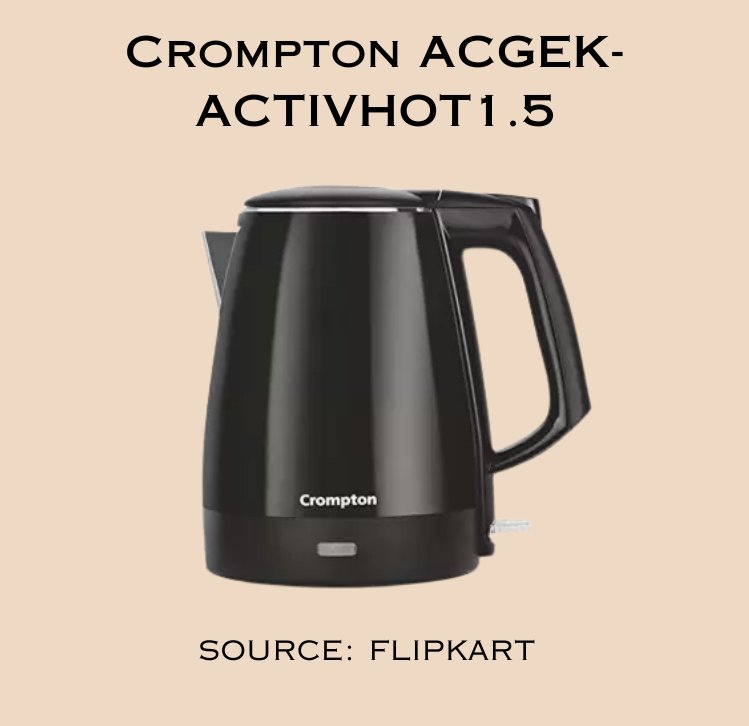
Reliable safety features like dry boil protection.
Fast boiling capacity.
Compact design, perfect for smaller kitchens.
Positive reviews for long-lasting performance.
WANT TO BUY AT LOW PRICE — CLICK HERE
When choosing a kettle, always prioritize safety certifications, quality materials, and trusted brands. A little research goes a long way in ensuring you get a kettle that’s safe, efficient, and built to last.

